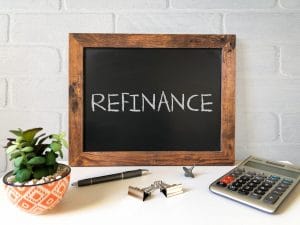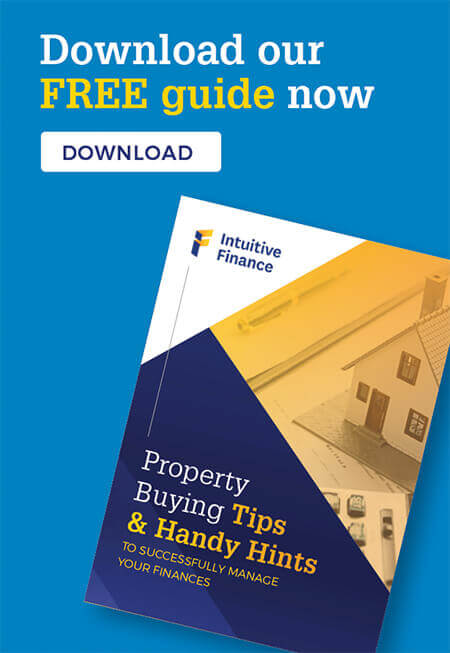The number of property investors in Australia has been growing throughout the past two decades as more and more people choose to create a better financial future for themselves.
With this growth in property investment, there has also been an increase in the number of people providing property investment advice, but unfortunately, not all of this “advice” is qualified or wise.
In this article, we’ll outline basic property investment processes including due diligence and ways to mitigate risks.
Choosing an Investment Property
There are literally millions of houses and units in Australia, but not all of them would be considered a ‘good investment’ property.
There are also many different strategies about how to select the best property investment. For example, some people look for yields or cash flow, while others invest in properties for their capital growth potential over the long-term.
Speaking to qualified professionals will help you decide which is the best investment approach for your personal long-term goals.
Keep in mind, your personal strategy will be influenced by your financial situation and your ability to manage any cash flow shortfalls between mortgage repayments and rents.
There are a number of factors to consider when choosing what to invest in and where to invest, however most successful investors select properties based on criteria such as:
- The current stage of the economic cycle and its future direction based on available information.
- A ‘focus in’ location analysis – i.e. choosing the best state, then city/town, then suburb, and then property.
- Property prices
- Rental return
Other factors investors consider include:
- Does the investment property also appeal to owner occupiers? If the answer is ‘yes’, it will increase your potential buyer base when it comes time to sell in the future.
- Can you buy the property at the bottom end of its value range or under favourable conditions?
- Can you purchase in an area that has strong capital growth potential and will continue to outperform the averages because of its demographics?
- Is there the ability to improve value/rent return through renovation or redevelopment?
One of the keys to successful property investment is completing research and due diligence long before you sign on the dotted contract line. Doing your analysis on the following will ensure you mitigate risks and improve the potential upside:
- Identify future developments in the area, such as new unit projects, which can have a significant impact on supply, demand, property prices and locational appeal.
- What buyer demographic finds your particular suburb appealing? If the majority of tenants are families, then it’s probably not the smartest idea to invest in a studio or one-bedroom apartment.
- It’s important to consider the condition of the property (both aesthetically and structurally), however, it’s equally important to look past relatively minor issues that can actually be opportunities to create instant equity through renovation.
- Look at areas or suburbs that are undergoing gentrification such as an increase in local cafes, restaurants or retail outlets with lifestyle appeal.
- Strong public amenity, parks, good public transport options, ease of access to the city and good schools are also very strong points to consider.
- You can always look to suburbs adjacent to blue-chip localities – sometimes referred to as ‘bridesmaid suburbs’ – as these tend to perform just as well as their neighbours but for a fraction of the buy-in price.
- Doorknock the neighbouring residents and see if they have any insider intel about your potential acquisition. You may discover the property has problems, such as bad tenants whom you’ll inherit along with the home.
During your due diligence it’s important to consider the structure itself.
It’s a no-brainer that you should have a professional building, pest and/or asbestos inspection carried out if you are seriously considering making an offer so as to identify any risks.
That way you are aware of any issues that can ultimately affect the price you pay for the property or provide useful insights that will result in you wisely walking away from a property investment lemon.
Overcapitalisation

As was outlined above, one of the best strategies can be the creation of capital growth or equity.
In fact, property investment is one of the few asset classes where you can physically increase its value by undertaking improvements or repairs.
Property investors need to ensure they complete rigorous research and budget calculations if they’re undertaking a renovation strategy, otherwise they risk overcapitalisation.
Overcapitalisation is when you invest more money on improving an asset than it adds in value to that asset.
To mitigate the risk of overcapitalisation, investors must understand their local market, including prices of similar properties in the area. It is also important to be aware of what’s considered a particular ‘standard’ of improvement for a location.
For example, if you paid $750,000 for your house and are considering spending $150,000 on renovating it, the local market must have properties of a similar style and standard that are selling for at least $900,000 to ensure you’ve made a healthy return on your endeavours.
A better spend may be $60,000 to $75,000 on the renovation to further mitigate the property investment risks, but you must ensure it’s spent in areas that will add the most value to your investment. So, don’t add an inground pool that half your end buyers won’t want or need. Instead, pay for repaint and new floor coverings that’ll really sell your property’s appeal.
Also, as a general rule of thumb, most renovators of a midrange property won’t spend more than 10 per cent of its value on the upgrades.
Major mistakes renovators commonly make include:
- Underestimating the cost of the renovation,
- Underestimating the time it takes to complete the renovation,
- Not completing a comprehensive financial feasibility analysis,
- Not using professionals for important elements of the renovation,
- Confusing TV reno shows with reality (did someone say The Block?),
- Not renovating to market requirements.
- Not balancing your holding and interest costs whilst under renovation (remember – no rent is coming in during this period)
Vacancies
Ideally, investment properties will be tenanted all year round, but there can be periods of vacancy, especially if tenants shift out and new tenants need to be found.

While property investors always need to ensure their properties are rented at market value, sometimes it can be worthwhile to keep rent at the same amount for a period of time if the tenants are long-term and are looking after the property well.
Upping the weekly rent by $10 or $20 regularly might be OK by market standards, but it can be detrimental to tenants and result in them choosing to shift out to a more affordable property instead.
Sometimes the risk is greater than the reward!
For example, let’s say your property is being rented for $550 per week to an excellent tenant, and you increase the rent to $575 per week come lease renewal time. The tenant decides it’s too much and moves out. You spend three weeks looking for a new tenant who eventually signs at the higher rent.
So, what’s happened? Well, in your pursuit of an extra $25 per week, you just did yourself out of $1650 in rent – or $32 per week over the 12 months.
In such a scenario, the property investor who left their rent at the same figure, which encouraged their tenants to stay, would have been better off than the landlord who increased the rent but had to deal with the loss of income during vacancy.
Pro tip – It’s also a good idea to have a financial buffer to help cover costs during periods of vacancy.
Change of circumstances
The best property investment strategy is to hold for the long-term. That way you can benefit from years of capital growth as well as increasing rents before selling in your retirement or leaving your portfolio to your beneficiaries.
However, life is rarely linear, so sometimes your financial circumstances change due to job loss or divorce, which may result in the need to sell one or more of your properties.
Of course, in times of financial change, it’s important to access the best advice from a qualified professional to ascertain your options, including whether it’s possible to retain your investment properties.
However, if you need to sell some or all your investment properties, you must understand the illiquidity of real estate, which means it can take time for a holding to sell.
Even in a good market, it usually will take at least two months or more for the property to be sold and settled.
In more normal market conditions, this period of time can be three to six months, depending on contract conditions and settlement periods.
Other property risk factors that can contribute to the time in which an owner can sell their property may include:
- Demand within the market,
- The condition of the property,
- The desirability of the property,
- The marketing of the property,
- The asking price of the property,
So, whilst investing in property is an excellent long-term wealth creation strategy, every investor still needs to make decisions with their eyes wide open to ensure that they can manage and mitigate the risks.
- Don’t hold your breath for a rate cut (but we also won’t see any further increases in 2024) - February 1, 2024
- Is Victoria’s housing supply about to get better – or worse? - November 20, 2023
- How to avoid a Christmas financial hangover - November 15, 2023









